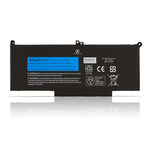You have no items in your shopping cart.
What should I avoid when using a defibrillator?

An AED is a portable, easy-to-operate device that requires minimal training to use and is designed for use in emergency situations. Compared with traditional defibrillators, the built-in computer can perform analysis to confirm whether the patient's illness requires defibrillation. During the defibrillation process, the AED's voice prompts and screen animation operation prompts make the operation simpler and easier.
The AED can instantly reach 200 joules of energy. During the process of rescuing the patient, please press the power button immediately after leaving the patient, and pay attention to people around you not to touch or approach the patient. Do not use the AED on patients in the water. If the AED is on the patient's chest, If your chest is sweaty, you need to dry your chest quickly because moisture will reduce the effectiveness of the AED. If the patient has no vital signs (no breathing and heartbeat) after using the AED, the patient needs to be sent to the hospital for treatment immediately.
An AED defibrillator is an emergency device used by rescuers and the general public to save lives in the event of cardiac arrest or arrhythmia. However, it has contraindications and needs to be used with caution.
Can I keep the AED connected to the patient when moving the patient?
The AED can be kept connected to the patient while the patient is being transported on a stretcher or ambulance. However, do not press the analysis button while the patient is moving because movement can interfere with rhythm analysis, artifacts can simulate ventricular fibrillation, and rescuers must ensure that the stretcher or ambulance has come to a complete stop before reanalyzing the rhythm.
If the patient has a lot of chest hair, what additional measures should be taken when using the AED?
If the patient has hair on the chest, the AED electrodes may not adhere properly to the chest skin. If this happens, the AED will not be able to analyze the patient's heart rhythm. Here's what you should do:
1. If the electrodes are attached to hair rather than skin, press each electrode firmly. 2. If the AED prompts you, press firmly on each electrode.
2. If the AED prompts you to "check electrode pads" or "check electrodes," please pull off the electrode pads quickly, which will remove a large amount of hair. 3. If the area where the electrode pads are placed is unclear, the AED will not be able to analyze the patient's heart rhythm.
3. If there is still a lot of hair in the area where the electrode pads were placed, use the shaver in the AED carrying case to shave the area.
4. Place a new set of shims. Follow the AED's voice prompts to continue.
Is it okay to use the AED if the patient is lying in water, snow or has a lot of water on their chest?
Water is a good conductor of electricity. Do not use an AED in water. If the patient is in the water, remove the patient from the water. If a patient is lying on water or has a large amount of water on their chest, the water may conduct shock current through the skin on the patient's chest, preventing sufficient shock energy from being released to the heart. If the patient's chest has a lot of water, quickly wipe the patient's chest before attaching the AED pads. An AED can be used if the patient is lying on snow or in a small puddle.
Can an AED be used when a patient has an implantable defibrillator and pacemaker?
When you have a patient with an implanted defibrillator/pacemaker, they will have a lump under the skin on their upper chest or abdomen from the device. The lump was about the size of 1/2 a deck of playing cards and had a small scar on it. These devices automatically deliver a direct shock to the heart, so if you place the AED pads directly on the implanted medical device, it may prevent the shock from being delivered to the heart. If you confirm that the patient has an implanted defibrillator/pacemaker: Avoid placing AED electrodes directly on the implanted device.
Analysis of implantable defibrillators and AEDs may sometimes conflict with shock cycles. If an implantable defibrillator is delivering shocks to the patient, wait 30-60 seconds for the implantable defibrillator to complete the treatment cycle before delivering a shock with the AED.

Kingsener For Philips M5070A M5066A M5067A M5068A 861304 Replacement Battery 9V 2019-12
How do I use an AED if I have a medication patch on my chest?
Often, for medical reasons, patients have pharmaceutical patches placed on their chests, such as nitroglycerin, fentanyl, pain creams, etc. It is important not to place AED electrodes directly on the medication patch. This is because the drug patch may block the transmission of energy from the AED pads to the heart and may cause minor burns to the skin.
If a shock will not be delayed, the medication patch should be removed and the area wiped clean before attaching the AED electrode pads.
Can I turn off the AED after successful defibrillation?
Error! It should not be turned off immediately. When defibrillation is successful and the heartbeat is restored, the heart rhythm is still unstable and secondary ventricular fibrillation may occur, and the AED continuously monitors the patient's heart rhythm through the electrode pads.
In addition, the electrode pads are disposable and can not be reused after removal, so do not turn off the AED or remove the electrode pads until 120 or a professional first responder arrives.
Precautions for safe use
1. During defibrillation, please keep a sufficient distance from the patient and metal objects connected to the patient, otherwise serious injury or death may result.
2. Do not use the defibrillator in an environment where anesthesia and other flammable and explosive items are placed to prevent fire or explosion, and ensure that the defibrillator and its surrounding area are clean and dry.
3. When connecting to the power supply, please ensure that the power socket has a protective ground. If not, please use battery power.
4. Defibrillation should not be performed on a patient lying on a wet floor. When the defibrillator is connected to the patient, no functional checks can be performed to protect the patient from accidental electrocution.
5. Treating patients with pacemakers may damage the pacemakers. Patients are advised to check their pacemakers after treatment.
6. When defibrillating children, choose the appropriate energy level.
7. When using the internal electrode plate, the maximum energy is 50J and must be sterilized.
8. Do not hold the shock-proof handle with wet hands or hands coated with conductive paste, otherwise you may get an electric shock.
9. When using electrode plates to treat patients, the electrode plates should be placed flat on the patient, and the force should be even. Do not use too much force to cause other injuries to the patient.
To avoid AED defibrillator contraindications, get professional help early and receive regular basic CPR training.
If this article still doesn't help your laptop battery, you can buy a new battery at BatteryMall.com
If you want to learn more about batteries, please visit:BatteryMall.com/blogs/support








